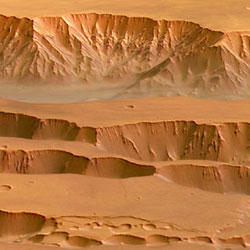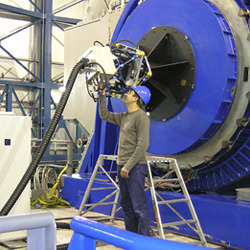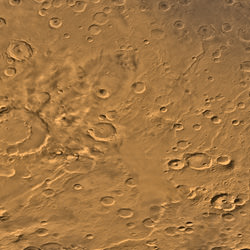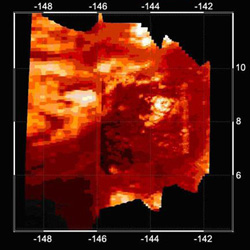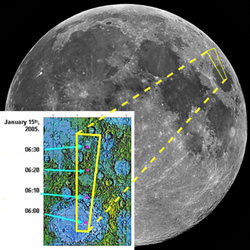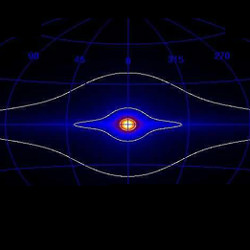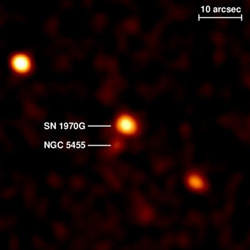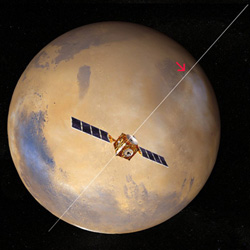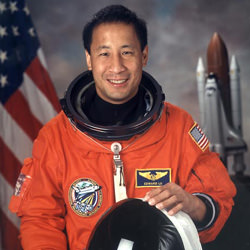
NASA Astronaut B612 Foundation director Dr. Edward Lu. Image credit: NASA
Listen to the interview: Homing Beacon for an Asteroid (6.2 mb)
Or subscribe to the Podcast: universetoday.com/audio.xml
Fraser Cain: Can you give me some background on the development of the B612 Foundation?
Dr. Edward Lu: It all started a few years back with a couple of different conversations I had with Piet Hut at the Institute for Advanced Studies, and a former astronaut called Rusty Schweickart. We were discussing the advances in high specific impulse propulsion, in other words ion propulsion or plasma propulsion, which is currently being worked on at NASA. We wondered, what could you use this for? One of the things that I’d been thinking about and discussed with various other people was the idea of pushing on an asteroid to demonstrate how this would work; to actually have a mission that would need this technology and would therefore drive you to complete the technology. Having a direct goal is the best way to get you to actually build something. The idea of moving an asteroid that something we’re eventually going to need to do, which is something that’s not possible using current chemical rockets. So we talked about that, and eventually we organized a meeting here at NASA of folks who work in the area of asteroids or working on spacecraft development. That was about 3-4 years ago. Everyone came down to NASA in Houston, and we talked about the idea and what it would take; how much thrust you would need, how much power you would need, how you could do such a thing. Our little foundation was an outgrowth of that meeting.
Fraser: You’ve set your sights on an asteroid that’s going to be swinging past the Earth in a couple of decades.
Lu: This is a proposal that’s been put forth by Rusty. This is an asteroid called 2004 MN4, which is going to make a very close flyby of the Earth in the year 2029 – it’s actually going to be about 4 Earth radii away, below the altitude of our geosynchronous satellites. It’s going to pass so close to the Earth that it’s going to take a pretty sharp bend in its trajectory. The problem is that where it goes after this flyby is really critically dependant on how close it comes to the Earth. It’s like a banked billiard shot. If you make a small error in a banked shot and you can have a big error where the ball goes after bouncing off of another ball. And that’s exactly what’s going on here. It turns out that our best guess at where it’s going to be when it comes by the Earth means that if there is a chance that 6-7 years later – either 2035 or 2036 – this thing could come back and actually hit the Earth. Now the chances are really small because we don’t have very good information on how close it’s going to be to the Earth. We only know its distance, how close it’s going to come to the Earth, by a factor of some thousands of miles. In order to know whether it’s going to come back and hit the Earth, you need to know accurately how close it’s going to come to the Earth to withing a factor of a few hundred metres, less than a kilometre. That’s why the best we can say is, oh, there’s some chance that it could hit us, but we just can’t simply say any better. What Rusty pointed out is that as the years go by, running up to 2029, this asteroid is going to go basically on the other side of the Sun. Its orbit is going to be on the other side of the Sun for some period of time. We’re going to lose track of it here in the next year or so. In which case, we won’t be able to pick it up again for another 6-7 years when it’s no longer orbiting the Sun, but on the other side of it. Its orbit will bring it back around our side of the Sun and we’ll pick it up again, and by then we’ll be able to determine its orbit more accurately, but the question is, will it be accurate enough to determine whether or not – after this slingshot when it comes by the Earth in 2029 – it will come hit us later.
Fraser: And you’re hoping if you can put some kind of tracking on the asteroid, then you’d be able to get it down within that few hundred metres distance.
Lu: Exactly, and the reason Rusty pointed out that’s it’s important to do it early is because, what if you find out that it is going to come back and hit us? If you’re going to do something about it, you would need to do something about it before 2029, before the close pass. And the reason is, again going back to a billiard shot, let’s say you’re taking a cue ball and trying to shoot it straight into a corner pocket. You can be a bit off in your aim and you can still hit that pocket pretty well. But not if you’re trying to hit another ball into the corner or do a bank shot where the cue ball bounces off something and then goes into the corner. Even a small error can mean you’re going to miss. So that’s both good and bad. If this thing is on a collision course, before 2029 you can upset it and keep it from going on a collision course by a very small change in its velocity. After 2029, it becomes very hard, in fact, more than likely not possible.
Fraser: I guess that’s one of my concerns in general about this whole process of detecting asteroids is that it’s all a world of probabilities. It’s not like it’s absolutely going to hit us on this date or anything. These are the chances of this asteroid, and those are the chances of that asteroid, and I wonder…
Lu: Well, it’s not really a matter of probability, that’s kind of a misnomer. Each one of these things either is going to hit us or it won’t. The reason you call it probability is because we can’t measure its exact trajectory well enough to say yes or no. That’s why we list it as probability. In the same way as: will it rain tomorrow. They say 30% chance of precipitation. It either is or isn’t going to rain, it’s just that we can’t tell you. In essence it’s like a weather forecast. And the accuracy with which you can measure the orbit, or the accuracy you can tell the weather, tells you how accurate your forecast is going to be. The forecast probability has nothing to do with the asteroid itself, it’s solely a matter of our telescopes.
Fraser: Right, and our techniques. What kind of mission would be involved to actually reach out and tap the asteroid?
Lu: First off, what’s actually been proposed is not to actually move it yet because the chances are that you won’t have to do it. What he’s actually proposing is that you put something on it that just simply measures where it is so you can tell for sure whether or not it’s going to hit or not. You want to know that early enough so that if it actually was coming, then you could do something about it. That’s what’s behind the idea of putting a transponder; all that is is a radio transmitter that you can measure exactly where it is. If you had to move it, that’s a whole other issue. But, the first thing is to know whether or not it’s even an issue or not.
Fraser: And so, what kind of mission would be involved to actually put the transmitter on the asteroid?
Lu: That’s something that would be a relatively simple mission, meaning all you have to do is get into the vicinity of it. You don’t even have to put down on it. Although, if you’re already going there, you might as well make this thing a very productive scientific mission because there’s plenty of things we can learn about asteroids. We’ve never visited a small asteroid. We’ve sent probes to much larger asteroids, hundreds of miles across, versus this one which is actually very small compared to those other ones – just a little over 300 metres across. Never having seen one of these things up close, obviously it could be a great scientific mission. What Rusty’s pointed out is that you kind of get two things here: number one, in the very unlikely case that this thing is going to hit us, this’ll tell you whether or not it will (more than likely not); but, if in fact it is not going to hit us, you have still put a very scientifically interesting mission out there. You can see what this thing is made of, what its surface structure is like, what it might be like to land on one of these things later, if you have to move another one. It tells you a lot about the properties of asteroids, so this thing doesn’t go to waste if you find, as it likely, that it’s not going to hit you.
Fraser: And what kind of time frame would you want to be able to launch it by?
Lu: You’d want to put it up something around the 2012/2013 time frame. And the reason is, again, you need lead time. Let’s say you put it up there in 2012 or 2013 and it takes a year or so to get there, and then you know within a year or so after that it is or isn’t going to hit you. Let’s say that you found out that it was going to hit you; well now it’s like 2015 at this point, and that gives you substantial 14 years to do something about it, before the close approach in 2029. Now you’re talking a much more ambitious mission, you’re talking a mission where you’re actually going to go push on this thing. That’s why you need the lead time. Something like that has never been tried before. It’s not something you can have an off the shelf spacecraft and say, well, we’ll just go ahead and launch it. It’s going to take some years to prepare the spacecraft, get it ready to launch, test it, and then fly it.
Visit the B612 Foundation Website
